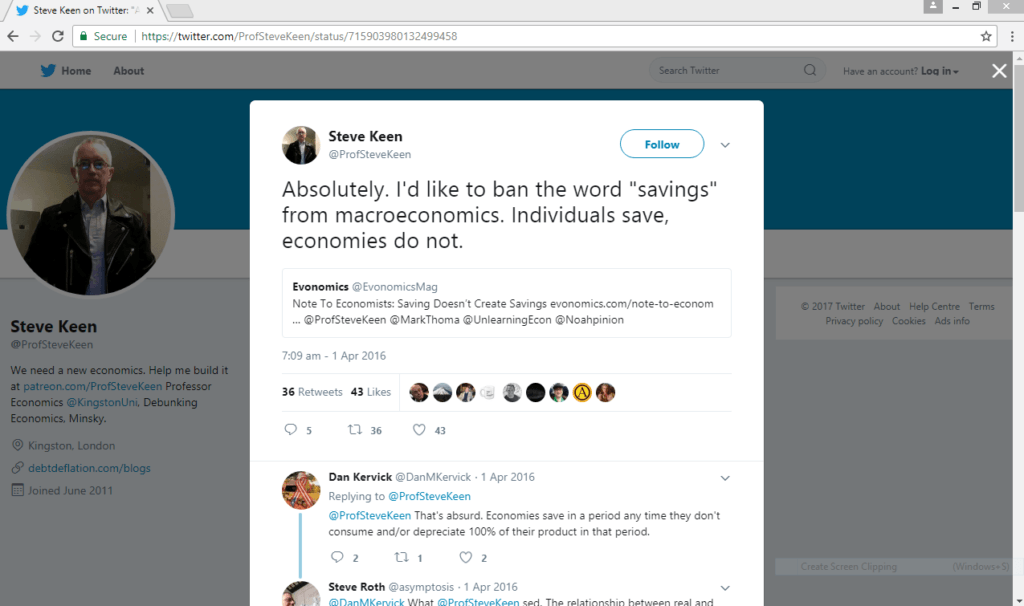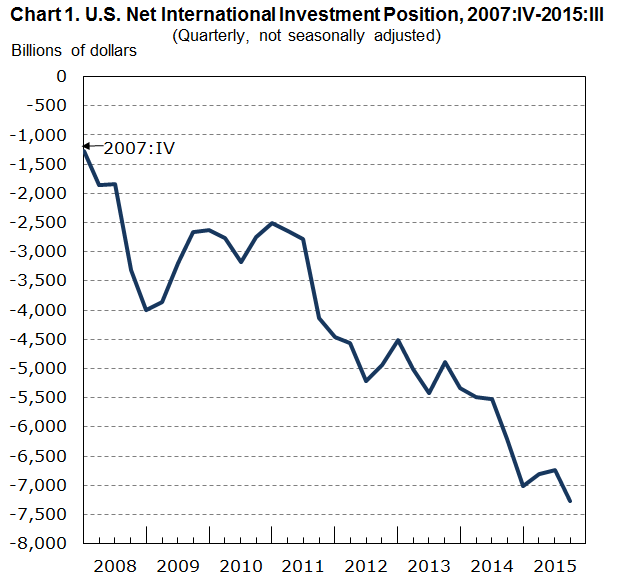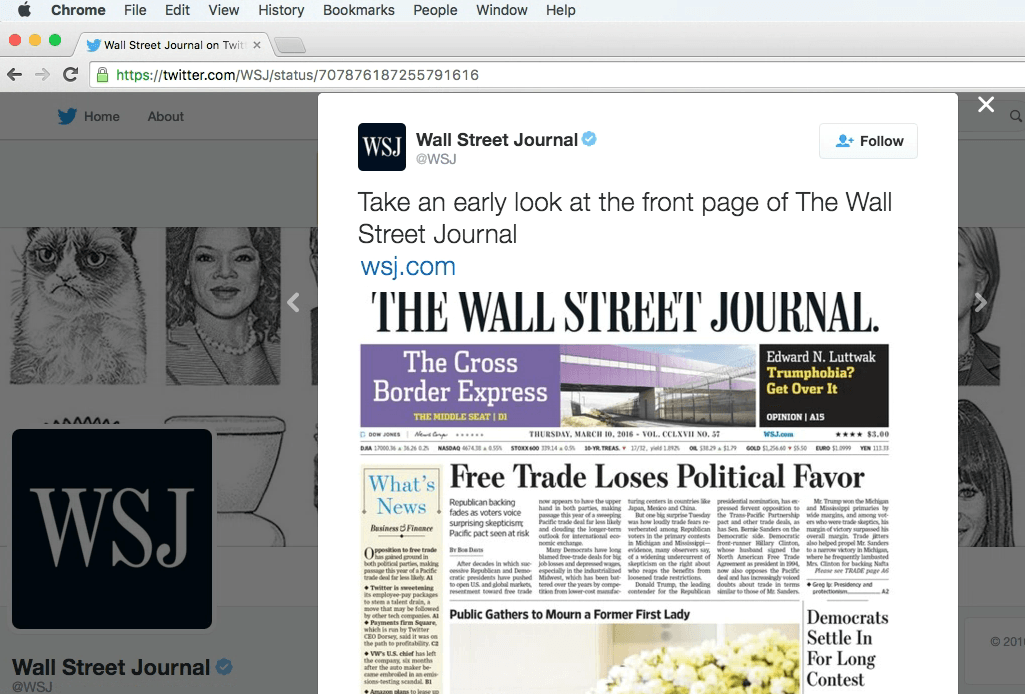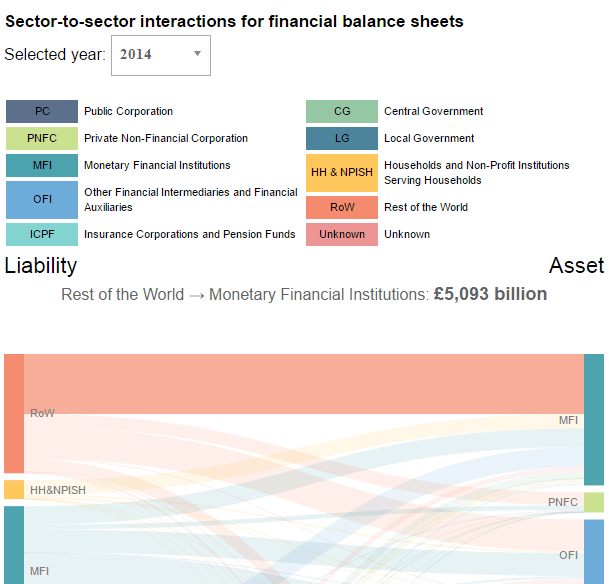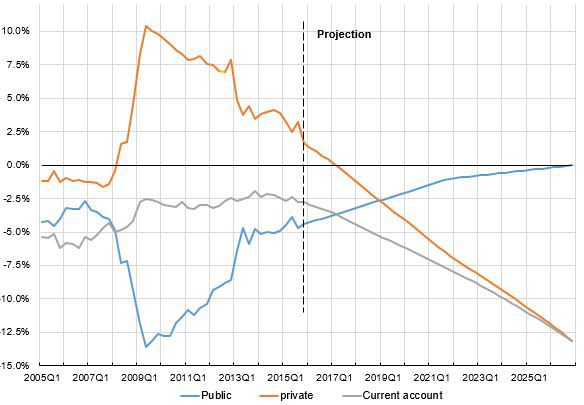This is the basis of the doctrine of the ‘foreign trade multiplier’, according to which the production of a country will be determined by the external demand for its products and will tend to be that multiple of such demand which is represented by the reciprocal of the proportion of internal incomes spent on imports. This doctrine asserts the very opposite of Say’s Law: the level of production will not be confined by the availability of capital and labour; on the contrary, the amount of capital accumulated, and the amount of labour effectively employed at any one time, will be the result of the growth of external demand over a long series of past periods, which permitted the capital accumulation to take place that was required to enable the amount of labour to be employed and the level of output to be reached which were (or could be) attained in the current period.
Keynes, writing in the middle of the Great Depression of the 1930s, focused his attention on the consequences of the failure to invest (due to unfavourable business expectations) in limiting industrial employment below industry’s attained capacity to provide such employment; and he attributed this failure to excessive saving (or an insufficient propensity to consume) relative to the opportunities for profitable investment. Hence his concentration on liquidity preference and the rate of interest, as the basic cause for the failure of Say’s Law to operate under conditions of low investment opportunities and/or excessive savings, and the importance he attached to the savings/investment multiplier as a short-period determinant of the level of production and employment.
On retrospect I believe it to have been unfortunate that the very success of Keynes’s ideas in connection with the savings/investment multiplier diverted attention from the ‘foreign trade multiplier’, which, over longer periods, is a far more important and basic factor in explaining the growth and rhythm of industrial development. For over longer periods Ricardo’s presumption that capitalists only save in order to invest, and that hence the proportion of profits saved would adapt to changes in the profitability of investment, seems to me more relevant; the limitation of effective demand due to oversaving is a short-run (or cyclical) phenomenon, whereas the rate of growth of’external’ demand is a more basic long-run determinant of both the rate of accumulation and the growth of output and employment in the ‘capitalist’ or ‘industrial’ sectors of the world economy.
Capitalism and industrial development: some lessons from Britain’s experience, Camb. J. Econ. (1977) 1 (2): 193–204, link
Yearly Archives: 2016
Being Keynesian In The Short Term And Classical In The Long Term
I am not. But the post is about the possibility. The title is borrowed from a paper by Gérard Duménil and Dominique Lévy.
Steve Roth has an article titled Note To Economists: Saving Doesn’t Create Savings. If you follow his blog regularly, his pieces read
The definition of saving is wrong. Saving is equal to income minus expenditure.
That’s not an exaggeration. He actually says it:
… Since saving = income – expenditures, [aggregate] saving must equal zero.
Steve Keen on Twitter supports Steve Roth.
click to view the tweet on Twitter
What’s with economists’ dislike for national accounts?
Steve Roth uses the phrase “savings” as a stock. Obviously his claim is just wrong as we know from national accounts:
Change in net worth = Saving + Holding Gains.
(with netting in holding gains).
Steve Keen doesn’t use saving as a stock but as a flow and a plural of saving. But Steve Keen’s point is also wrong. National saving is equal to the sum of saving of all economic units, such as households, firms, government etc. Even the household sector’s propensity to save collectively matters. That’s what macroeconomics is all about.
Now moving the more important point: is it possible that a higher propensity to consume reduces the long run rate of accumulation?
There are several Post-Keynesian economists who have considered the possibility. Of course it should be contrasted with supply side neoclassical economics. A few are Basil Moore, Wynne Godley, Marc Lavoie, and Gérard Duménil and Dominique Lévy as mentioned at the beginning of this post.
In their paper Kaleckian Models of Growth in a Coherent Stock-Flow Monetary Framework: A Kaldorian View, Godley and Lavoie find this in their models (draft version here):
We quickly discovered that the model could be run on the basis of two stable regimes. In the first regime, the investment function reacts less to a change in the valuation ratio-Tobin’s q ratio-than it does to a change in the rate of utilization. In the second regime, the coefficient of the q ratio in the investment function is larger than that of the rate of utilization (γ3 > γ4). The two regimes yield a large number of identical results, but when these results differ, the results of the first regime seem more intuitively acceptable than those of the second regime. For this reason, we shall call the first regime a normal regime, whereas the second regime will be known as the puzzling regime. The first regime also seems to be more in line with the empirical results of Ndikumana (1999) and Semmler and Franke (1996), who find very small values for the coefficient of the q ratio in their investment functions, that is, their empirical results are more in line with the investment coefficients underlying the normal regime.
… In the puzzling regime, the paradox of savings does not hold. The faster rate of accumulation initially encountered is followed by a floundering rate, due to the strong negative effect of the falling q ratio on the investment function. The turnaround in the investment sector also leads to a turnaround in the rate of utilization of capacity. All of this leads to a new steady-state rate of accumulation, which is lower than the rate existing just before the propensity to consume was increased. Thus, in the puzzling regime, although the economy follows Keynesian or Kaleckian behavior in the short-period, long-period results are in line with those obtained in classical models or in neoclassical models of endogenous growth: the higher propensity to consume is associated with a slower rate of accumulation in the steady state. In the puzzling regime, by refusing to save, households have the ability over the long period to undo the short-period investment decisions of entrepreneurs (Moore, 1973). On the basis of the puzzling regime, it would thus be right to say, as Dumenil and Levy (1999) claim, that one can be a Keynesian in the short period, but that one must hold classical views in the long period.
So there is a possibility that a higher propensity to consume leads to a lower growth in the long run. I do not think this is generally true, but this could be possible in some economies.
Two conclusions. It’s counter-productive to mix the definition of saving and what’s called “net lending” in national accounts. It’s possible (which shouldn’t mean that it’s necessarily the case) that Keynes’ paradox of savings doesn’t hold in the long run. I don’t believe that’s the case but purely arguing using national accounts and/or changing definitions won’t do.
Getting Paid To Have A Trade Deficit?
Source: BEA.
Eric Lonergan has written an interesting post about US trade deficits on his blog Philosphy Of Money/Sample Of One. In the post Eric claims that the United States is not a debtor of the world but that she is a creditor of the world! Eric also says that a lot of talk of all this is conventional wisdom and in reality the United States is getting paid to have lunch.
First, it’s no conventional wisdom. Most of standard macroeconomics is simply denying the importance of balance of payments. It is held that market mechanisms will correct imbalances, if only the government does its job. So there’s no conventional wisdom worrying about the trade deficit of the United States of America. It is exactly the opposite – a heterodox view.
Second, there is no “free lunch”. Imports put a drain on demand and output and because of the imbalance of the U.S. trade, full employment has been a distant dream. With so much of unemployment (especially in the crisis) and the slow recovery, one cannot claim that the U.S. has some free lunch. Only if there is full employment and that too remaining sustainable, can one claim that there’s some “free lunch”. A smaller point is that one needs the correct counter-factual: if the U.S. trade deficit had been lower, interest income (one of Eric’s main points) would have been even higher. So one more reason to avoid the phrase “free lunch”.
Moving to more important points. Eric claims that net return of FDI is high and hence BEA’s numbers are not right. Specifically he claims:
So here’s the crux: American generates a high positive net income from its net international asset position – which implies its net external asset position is a positive number. Despite running permanent current account deficits, the US has accumulated net external assets. this sounds less counterintuitive if you think that all it means is that US assets oversees are more valuable than foreign holdings of US assets.
To highlight how significant the difference is, BEA measures of US net external liabilities are around $7trn, if we simply value the net income on a PE multiple of 14x, the net external assets of the US are around $2.7trn!
An inconsistency this large seems extreme, but consider the valuation of foreign direct investment (FDI). According to the BEA, net FDI of the US has a value of less than $1trn, although the US earns $424bn on its overseas FDI and foreign FDI in the US only earns $153bn. If we value both income streams on 14x earnings, the US has net FDI assets of $4.2trn – the BEA ‘market value’ estimates are out by $3trn.
Now, that is not a correct way to approach this. To see the error, assume the stock of outward FDI is $100 and the stock of inward FDI is also $100 at market prices. Suppose investment receipts is $10 and income paid is $9. So it looks like the United States is earning $1 on a net FDI of 0. So according to this argument, the return is infinite!
It is better to look at the actual numbers:
Stocks
Outward FDI: $6,695bn
Inward FDI: $6,196 bn.
Flows
Direct investment income: $776bn
Direct investment payments $592bn.
There is nothing drastically wrong about these numbers. Perhaps, it can be argued that direct investment in the US by foreigners will take time to pay off, or that foreigners are satisfied with this or something else. These numbers do not appear wrong.
Netting inward and outward and comparing returns to the net stock is an invalid argument, as I showed above with an example of inward/outward FDI of $100.
In addition, on Twitter Eric says a DCF (discounted cash flow) model also supports his thesis that the United States is a net creditor. The loophole in this argument is that it holds assets and liabilities vis-à-vis foreigners fixed. But because the United States runs current account deficits, liabilities rise faster than assets attributable to the deficit. So even if the U.S. earns interest income, net, from abroad, this effect will catch up.
There’s other way of saying all this. If r is return on assets A and L are assets and liabilities.
rA > rL
rA ·A > rL·L
is not inconsistent with
A < L
Second, using subscripts, 0 and 1 for now and some point in future,
rA0 ·A0 > rL0·L0
does not imply automatically that
rA1 ·A1 > rL1·L1
because liabilities can rise faster than assets (because of current account deficits) and even if return on assets is higher than return earned by foreigners on U.S. liabilities, net interest income can turn negative.
Anyway, the point of this post is that while netting is a good concept, one cannot blindly net accounting numbers. The example, a net FDI of $0 earning a net income of $1 and hence infinite return(!) is not a valid way of doing accounting. BEA’s numbers look correct.
Helicopters
Frequently, economists start discussing helicopters. This is the most counter-productive discussion. There are two things due to which they invoke this:
- Confusion
- Intent
The confusion part is basically due to economists’ complete failure to understand what money is and how to account for it and this is due to a lack of training in national accounting/flow of funds etc.
The intent part is equally important. This is because economists are trained in thinking of fiscal policy as impotent. After the crisis, they have party understood the role of fiscal policy but the notion that fiscal policy is impotent is so deeply ingrained that it’s difficult for them to come out of it. This reason is not so obvious but can be proved as follows: If they really think that fiscal policy is not impotent, they should rather suggest a rise in government expenditure than some helicopters.
There’s a third reason.
Wynne Godley in his paper Money, Finance And National Income Determination, June 1996 had a good description of all this:
Modern textbooks on macroeconomics treat money in a remarkably uniform – and remarkably silly – way. In the primary exposition the stock of “money” is treated as exogenous in the two senses a) that it is determined outside the model and b) that it has no accounting relationship with any other variable. The reader is then invited to assume, pro tem, that the central bank controls “the money supply” so that it is constant through time. When the operations of banks are described, typically some thirty chapters later, the quantity of money is some multiple of commercial banks’ reserves as a consequence of these institutions having become “loaned up”.
Silly? The money stock, as revealed in real life financial statistics, is as volatile as Tinkerbell – for good reasons, as I shall argue below. How can it be sensible to undertake a thought experiment in which the flickering quantity called “money” is literally constant through periods at least long enough for capital equipment to be planned, built and commissioned – and for lots of other things to happen as well? And the other, “money multiplier”, story has the strange defect that, while giving some account of how credit money might be created, it completely ignores the impact on spending of the counterpart changes in bank loans which are assumed to be taking place; perhaps it is because loan expenditure would mess up the solution of the IS-LM model when alternative assumptions about “the money supply” are used, that the supposed process of money creation normally gets separated from that of income determination by so many chapters.
The bibles of the neo-classical synthesis don’t help. There is a spectacular lacuna in the constructions presented, for instance, by Patinkin, Samuelson and Modigliani with regard to the asset side of commercial banks’ balance sheets. Usually the role and
even existence of bank credit is simply ignored. Modigliani (1963) gives banks (with regard to their assets) no role other than to hold government bonds; and Milton Friedman famously used a helicopter when he wanted to get more money into the system.There is a reason for all this. It is that mainstream macroeconomics postulates in its basic model that macroeconomic outcomes are all determined by relative prices established in Walrasian markets. Individual agents are held to engage in a market process of which the outcome is to find prices for product, labour and money which clear all three markets plus, by Walras’s law, the market for “bonds”. But as is now well known, there is no use for money in the Walrasian world even though, paradoxically, “money” is a logical necessity if the model is to be solved.
[boldening: mine]
There is no need for helicopters. All is needed is a description via social accounting (i.e. national accounting). Just say “increase government expenditure” to the government or “expand fiscal policy”.
What Post-Keynesian Economics Has Brought To An Understanding Of The Global Financial Crisis
I came across a nice Marc Lavoie paper from July 2015 from which I borrowed the titled of this post. Marc Lavoie discusses the importance of PKE monetary economics, stressing flow-of-funds modelling such as as done by Wynne Godley and his prescient analysis of the fate of the US economy and the rest of the world.
(the post title is the link)
Robert Blecker has a great article from the same conference (annual conference of the Canadian Economics Association) discussing similar things: heteredox understanding of the crisis. He discusseses Wynne Godley’s Seven Unsustainable Processes. He also talks of Hyman Minsky and neo-Kaleckian models of how income distribution effects aggregate demand. His paper titled Finance Distribution And The Role Of Government: Heterodox Foundations For Understanding The Crisis is here.
Is Floating Better? Is The Stock Of Money Exogenous In Fixed Exchange Rate Regimes?
I believe that the basic problem today is not the exchange rate regime, whether fixed or floating. Debate on the regime evades and obscures the essential problem … Clearly flexible rates have not been the panacea which their more extravagant advocates had hoped … I still think that floating rates are an improvement on the Bretton Woods system. I do contend that the major problems we are now experiencing will continue unless something else is done too.
– James Tobin, A Proposal For Monetary Reform, 1978
Frances Coppola has written a post saying that floating exchange rates are not the panacea. Although I agree with her point, there are however a few points in her article which has some issues. She says that money stock is exogenous in gold standard.
Under a strict gold standard, the quantity of money circulating in the economy is effectively set externally. The domestic money supply can only grow through foreign earnings, which bring gold into the country.
… This is evident from the quantity theory of money equation MV = PQ, which is fundamentally flawed in a fiat currency fractional reserve system but works admirably under a strict gold standard or equivalent.
Frances is critiquing Neochartalists there but ends up accepting their notion that macroeconomics is something different when a nation’s currency is not floating and there’s an exogenous stock of money in fixed exchange rate regimes. There is absolutely no proof that it is so. Money stock can grow if there’s higher economic activity due to rise in private expenditure relative to income or via fiscal policy. But why this obsession with Monetarism? It doesn’t work anywhere: whether the exchange rate is fixed or floating. All arguments made in Post Keynesian economics carry through to the gold standard. Indeed Robert Mundell himself realized this in 1961 [1].
Here’s a quote from the book Monetary Economics by Wynne Godley and Marc Lavoie, page 197, footnote 11:
It must be pointed out that Mundell (1961), whose other works are often invoked to justify the elevance of the rules of the game in textbooks and the IS/LM/BP model, was himself aware that the automaticity of the rules of the game relied on a particular behaviour of the central bank. Indeed he lamented the fact that modern central banks were following the banking principle instead of the bullionist principle, and hence adjusting ‘the domestic supply of notes to accord with the needs of trade’ (1961: 153), which is another way to say that the money supply was endogenous and that central banks were concerned with maintaining the targeted interest rates. This was in 1961!
Bretton Woods was the emperor’s new clothes and floating exchange rates are the emperor’s new new clothes. The important question is whether floating exchange rates offer any market mechanism to resolve balance of payments imbalances and the answer is that it doesn’t. In gold standard, current account deficits can be financed by official sale of gold in international markets and residents borrowing from abroad. In floating exchange rate regimes, it is financed by borrowing from abroad. Hardly much difference. So the main adjustment is left to movement of the exchange rate. One needs to suspend all doubt and believe in the invisible hand to think the movement of exchange rates can do the trick. The reason it is the emperor’s new new clothes is that the promises never worked. And similar promises were made by economists that there’s a market mechanism to resolve balance of payments imbalances in fixed exchange rate regimes.
To summarize, my argument is that the only point to debate is whether floating the exchange rate resolves imbalances as compared to fixed exchange rates, not about the endogeneity of money. Although there is a role because of the movement of the exchange rate, floating exchanges is not a panacea. Although I am not on the side of the Neochartalists in the debate, I thought I’d point this out: do not fall into the pitfall of your opponent.
- Mundell, R. (1961) ‘The international disequilibrium system’, Kyklos, 14 (2),
pp. 153–72.
The ‘Paradox’ Of Protectionism
Paul Krugman says trade wars are a wash. Brad Delong is raising his neoliberal freak flag high.
Who is right? Answer: Neither. Global output will rise under non-selective protectionism (or has an expansionary bias, to be more precise). Protectionism reduces the propensity to import. That doesn’t mean imports will fall. Total imports of an individual nation will rise because of higher income. World trade will rise because of higher world income.
In other words, non-selective protectionism acts by reducing the propensity to import by price elasticity effects but raises volume of imports via income elasticity effects.
The world as a whole is balance-of-payments constrained, not just individual nations. Raising tariffs on imports incentivises producers to produce more as they will face less competition from abroad. Consumers will shift to domestically produced goods because of price elasticity effects.
Moreover, since governments of most nations won’t have a balance-of-payments constraint if there are large tariffs, they will be free to boost domestic demand by fiscal policy, limited only by the economy’s capacity to produce. If it is done, it will be a conscious behaviour by the government.
There is of course another way fiscal policy gets relaxed because of balance of payments. Reduction of current account deficits, relative to gdp, reduces the budget deficit, relative to gdp (as can be shown by a behavioural model and this shouldn’t be surprising as the two are related by an accounting identity). Typically governments follow some rules even if they aren’t explicitly required and their expenditure is endogenous to the government budget deficit: they tighten fiscal policy when the budget deficit goes out of a limit and relax fiscal policy when the budget deficit is within the limit. So improvement in a country’s balance of payments position would lead to a relaxation of fiscal policy, automatically.
To summarize, protectionism if done the right way can raise world trade because of rise in world income. There is no economic case against protectionism. There is opposition because few corporations want to increase their share in world markets. Protectionism reduces share of these mega corporations instead of reducing world trade. So “free trade” (which is managed trade for a few) only benefits a few and imposes a huge cost on the world economy.
All that is for the current world economic outlook. Typically in deep recessions governments take protectionist measures. In such scenarios, since output is falling, there is a tendency to confuse this with causation. It is more accurate to say that protectionism prevented a deeper implosion in such cases.
Non-selective Protectionism In Wynne Godley’s 1999 Article Seven Unsustainable Processes
‘Free Trade Loses Political Favour,’ says the front-page of today’s Wall Street Journal.
Paul Krugman has two articles conceding that he held wrong views earlier.
Krugman says:
But it’s also true that much of the elite defense of globalization is basically dishonest: false claims of inevitability, scare tactics (protectionism causes depressions!), vastly exaggerated claims for the benefits of trade liberalization and the costs of protection, hand-waving away the large distributional effects that are what standard models actually predict.
Krugman claims that he hasn’t done any of it but a reading of his 1996 article Ricardo’s Difficult Idea says the exact opposite.
The earliest cri de cœur of the U.S. balance of payments situation came from Wynne Godley in his 1999 article Seven Unsustainable Processes.
In his sub-heading ‘Policy Considerations,’ he says:
Policy Considerations
The main conclusion of this paper is that if, as seems likely, the United States enters an era of stagnation in the first decade of the new millennium, it will become necessary both to relax the fiscal stance and to increase exports relative to imports. According to the models deployed, there is no great technical difficulty about carrying out such a program except that it will be difficult to get the timing right. For instance, it would be quite wrong to relax fiscal policy immediately, just as the credit boom reaches its peak. As stated in the introduction, this paper does not argue in favor of fiscal fine-tuning; its central contention is rather that the whole stance of fiscal policy is wrong in that it is much too restrictive to be consistent with full employment in the long run. A more formidable obstacle to the implementation of a wholesale relaxation of fiscal policy at any stage resides in the fact that this would run slap contrary to the powerfully entrenched, political culture of the present time.
The logic of this analysis is that, over the coming five to ten years, it will be necessary not only to bring about a substantial relaxation in the fiscal stance but also to ensure, by one means or another, that there is a structural improvement in the United States’s balance of payments. It is not legitimate to assume that the external deficit will at some stage automatically correct itself; too many countries in the past have found themselves trapped by exploding overseas indebtedness that had eventually to be corrected by force majeure for this to be tenable.
There are, in principle, four ways in which the net export demand can be increased: (1) by depreciating the currency, (2) by deflating the economy to the point at which imports are reduced to the level of exports, (3) by getting other countries to expand their economies by fiscal or other means, and (4) by adopting “Article 12 control” of imports, so called after Article 12 of the GATT (General Agreement on Tariffs and Trade), which was creatively adjusted when the World Trade Organization came into existence specifically to allow nondiscriminatory import controls to protect a country’s foreign exchange reserves. This list of remedies for the external deficit does not include protection as commonly understood, namely, the selective use of tariffs or other discriminatory measures to assist particular industries and firms that are suffering from relative decline. This kind of protectionism is not included because, apart from other fundamental objections, it would not do the trick. Of the four alternatives, we rule out the second–progressive deflation and resulting high unemployment–on moral grounds. Serious difficulties attend the adoption of any of the remaining three remedies, but none of them can be ruled out categorically.
[italics in original, underlying mine]
The UK ONS (Office of National Statistics) has launched a new set of statistics: the flow of funds for the UK economy.
The recent financial crisis re-emphasised the importance of monitoring the build-up of financial risks in the economy. Since then, there have been renewed calls for identifying balance sheet exposures between different institutional sectors.
Building on recently published flow of funds experimental statistics by Office for National Statistics, in partnership with the Bank of England, this article takes a further step in exploring sectoral interconnectedness within the UK economy and analyses these lender-borrower relationships in the context of risk exposures. Using data visualisation techniques, we illustrate how financial counterparty relationships have changed over time and infer what this tells us about the transmission of financial risks.
In addition, there is an interactive Sankey diagram on the site.
Fun!
(The title of this post is the link).
Bernie Sanders, U.S. Private Sector Deficits And Balance Of Payments
Over his blog The Beauty Contest – A blog on Spanish and international affairs, macroeconomics and finance, Javier López Bernardo has an analysis of Bernie Sanders’ economic plan (written with his colleague Rafael Wildauer).
Javier López Bernardo and Rafael Wildauer stress the importance of the U.S. balance of payments constraint on U.S. growth. He uses a sectoral financial balances model to highlight how sectoral balances would look under Bernie Sanders’ plan: an exploding combination of U.S. private debt and negative net international investment position because of exploding negative financial balance of the private sector and the U.S. economy as a whole.
Also, they say:
We have not intended to bash Mr. Sanders’ economic program (actually, we are quite sympathetic with most of its measures) or Prof. Friedman’s economic exercise (which is useful to frame the economic discussion), but simply to highlight the incompleteness of economic analysis carried out in closed-economy frameworks – as the critics and Prof. Friedman’s exercise have exemplified.
Their projection is this chart:
